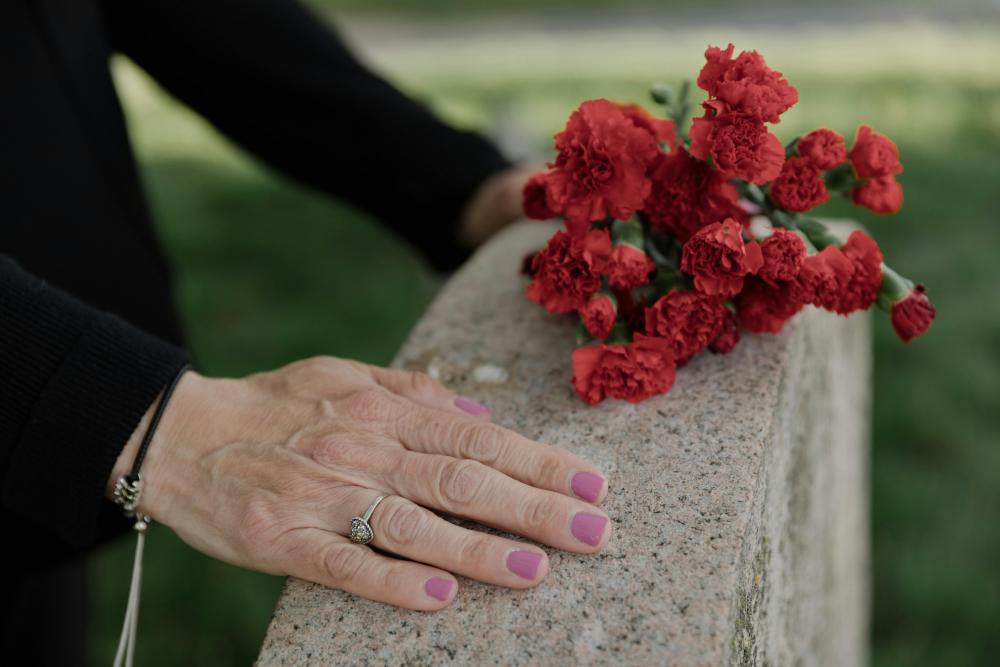Grief is a profound and deeply personal experience that affects everyone differently. When faced with losing a loved one, people often seek ways to express their condolences, show support, and offer comfort to those mourning. One of the most time-honored and meaningful gestures in times of sorrow is the gift of sympathy flowers. More than just a traditional act of kindness, sympathy flowers serve as a visual representation of love, compassion, and remembrance. They provide a gentle yet powerful message of support to grieving people, reminding them they are not alone in their sorrow.
The Healing Power of Sympathy Flowers
Flowers have long been associated with emotions and symbolic meanings, making them an especially fitting tribute in times of loss. Blooms convey different messages, allowing people to express condolences in a way that words sometimes cannot. A carefully chosen sympathy flower arrangement can provide solace, uplift spirits, and help the grieving process.
One of the ways flowers help with grief is through their aesthetic beauty and calming presence. When surrounded by beautiful floral arrangements, mourners often find a slight sense of peace amidst the chaos of loss. The sight of fresh, delicate blooms offers a momentary escape from sorrow, bringing a touch of serenity and warmth into an otherwise heavy atmosphere. Flowers’ soft, natural fragrance can also have a therapeutic effect, evoking memories and providing comfort in subtle ways.
Moreover, the act of sending or receiving sympathy flowers helps to foster human connection. Grief can often feel isolating, and those who have lost a loved one may struggle to find the right words to express their pain. A floral arrangement is a silent but powerful message of empathy and support. It reassures the grieving that they are cared for, encouraging a sense of comfort amid loss. Even if someone feels at a loss for words, sending flowers communicates compassion.
The Symbolism of Sympathy Flowers
Flowers have distinct symbolic meanings, which enable people to express various emotions through their choice of floral arrangements during memorials. White lilies serve as popular funeral flowers because they symbolize purity and the departed soul’s reborn innocence. The meaning behind roses depends on their color, as they can represent love or reverence or serve to remember someone. White roses symbolize compassion and innocence, and red roses demonstrate strong affection and honorable respect toward someone who has passed away. The cultural tradition of using chrysanthemums as a mourning symbol exists throughout many nations because they represent honor and truth.
A sympathy arrangement becomes more meaningful by selecting appropriate flowers that represent the departed person’s individual characteristics and cherished memories. Sympathy flowers can represent either the preferred blossoms of the departed loved one or plants that symbolize the power and endurance of the mourning family. Through this symbolic act, sympathy flowers gain additional meaning, which turns them into permanent memorials dedicated to the deceased individual.
The Role of Sympathy Flowers in Memorial Services
Memorial services and funerals heavily rely on sympathy flowers for their multifaceted role beyond providing comfort to mourners. Sympathy flowers create visual representations that symbolize the affection that family members, friends, and the community offer. People place floral arrangements near the casket and urn to create a peaceful and respectful atmosphere. Memorial displays and photographs benefit from flower arrangements highlighting the departed person’s beauty and impact.
Various cultures incorporate flowers as vital elements during their traditional mourning practices. Asian cultural traditions use white flowers for funerals because these blooms symbolize mourning and purity. European funeral traditions use various flower colors to express specific emotions, which range from mourning and sadness to celebrating life. Flowers function as a culturally independent representation of sympathy and memorialization across all social backgrounds.
Sympathy flowers serve an extended purpose after the funeral ceremony. Most bereaved families welcome flower gifts that remain reminders of their deceased loved ones’ honored memory. People select different methods to maintain flowers preserving petals by pressing or drying them to make enduring memorials. People who want to keep their connection to support and love will transform the arrangements into smaller bouquets to display at home.
The Emotional Impact of Giving and Receiving Flowers
Sending or receiving sympathy flowers in such situations produces strong emotional effects that influence both the donor and recipient during their time of need. When people send flowers for sympathy, they create a valuable way to show their condolences and extend comfort from a distance. The practice lets people participate in mourning rituals even though they cannot attend in person.
When someone gets sympathy flowers, they obtain comfort by knowing they have companionship in their time of loss. Through each floral arrangement, recipients learn that many individuals think about them while facing challenges. The support is a vital comfort for people experiencing difficulty managing their emotions because it offers them a small yet meaningful way to find peace.
Research indicates flowers generate positive mental health benefits by decreasing anxiety along with stress and easing the symptoms of depression. Fresh blooms in the space develop a soothing atmosphere that allows people to find tranquility and contemplation. The therapeutic properties of flowers become essential in grief recovery because they create peaceful moments that strengthen coping abilities for loss.
Conclusion
The tradition of sympathy flowers goes beyond simple gestures because they embody the most profound expressions of love together with sentimental support and eternal memories. The grieving finds solace through their presence because the flowers create a connection that brings peace to this challenging period. The healing process gains support from sympathy flowers because their beauty, fragrance, and symbolic meanings let mourners know they have companionship. Flowers create enduring effects on grieving individuals because people send them right after death or receive them during the days following the loss.
Understanding sympathy flowers’ importance in grieving helps us sustain this traditional grief support method for people who have lost someone important to them. When words cannot express grief adequately, flowers create a silent message that provides comfort and compassionate support.
Want to explore how gratitude – and other tools – can help you manage challenging emotions?
Snag a free workbook and get inspiration on all the ways to love your life even more.
>>Click Here to Discover Additional Articles on Strategies to Get Your Life on Track <<









